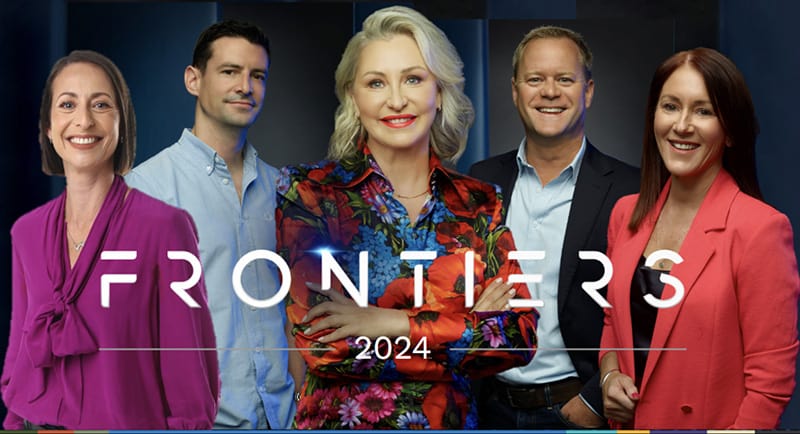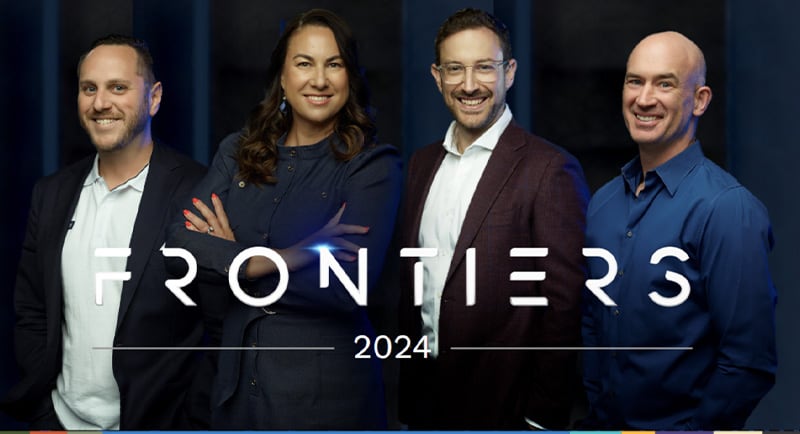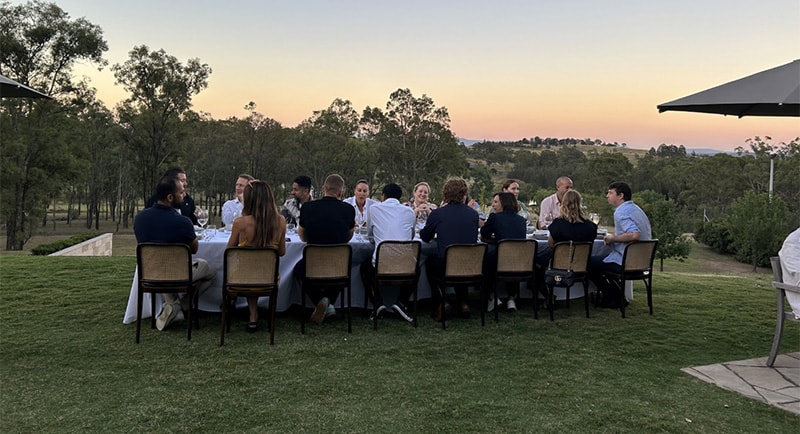In 1980, the average supermarket presented shoppers with 14,000 products to choose from. By 2018, that number had increased to over 30,000, and it continues to increase today.
To help brands break through and make sure that their products are the ones consumers look to, The Growth Distillery created The Influence Codes, with a sneak peek of the research being presented at Newsamp’s 2024 Frontiers event.
“The higher the cognitive load, the more important affinity is going to be influencing your decision or your consumers’ decision,” director of The Growth Distillery, Dan Krigstein, told the room.
“This is really interesting because it’s counter to the conventional marketing knowledge.
“You’re taught to find those moments of least resistance, find the troughs in the cognitive load and that’s where you put your message. What we can tell you is it’s actually the opposite.”
The research, which will be released in full in April, also pointed out that fundamentally, the world has been disrupted in three cultural waves that impact how people are influenced when they make decisions every day.
The first, our information context, reflects how people operate in an information overload when only a few years ago, information was much more scarce.
“We live in a world where we have more access to information in the palm of our hands than JFK did during the Cuban Missile Crisis – even if you’re a teenager. What that does is have a really crippling impact on our brain,” Krigstein said.
The second big change is the shift in culture codes. Society used to be far more rigid in how it reflected the movements in culture. If you wanted to know what modern masculinity looked like in the 1950s, you could pick up a magazine and see a man in a suit opening the door for his wife.
Co-presenting the research, Toby Harrison, chief strategy officer, growth, and innovation lead at Ogilvy AUNZ said “Lil Nas X is as much a key example of what country music is as Merle Haggard. Everything’s shifting, so it’s hard to have clear-cut handles on what culture is telling us.”
The third change is the ever-growing trust in institutions including government agencies, councils, state-based representation – and brands.
“The baseline level of cynicism across the populace is much higher, so much so that the foundational job of the brand is no longer to build trust, but to break cynicism,” Krigstein said.
“That’s quite a profound shift in terms of the role that you play as a brand, going from introducing yourself from a baseline to build trust off of, versus from a baseline of cynicism to pull down from.”
Now in its fourth year, Frontiers is an annual event facilitated by Newsamp, with separate events for each media agency group nationwide, as well as independents.
The day began with presentations by the Newsamp team of case studies highlighting the impact that the News Corp team can have on brands, before breaking out into workshops in the afternoon.
This year, the event was centred around the theme ‘positive influence’.
“Frontiers came about because of COVID, because we were looking for a way to get together with agencies,” News Corp Australia’s managing director, national sales, Lou Barrett, told Mediaweek.
“It started with the consortium agencies so that we could deep dive with them into their clients and opportunities, but also given we’re such a complex business, it helps them navigate us. Sometimes our messages miss, because we are so complex.
“Having that time – I called it getting them in a headlock, but I’ve now toned that down to a warm embrace – getting them together with us and deep diving on clients, it helps us deliver on client outcomes.”
News Corp’s Frontiers speaks to 76 agencies across 24 days’ worth of events, hosting 465 guests in 45 live workshops. The New South Wales, Victoria, and Queensland events are done, with only South Australia’s consortium agencies sessions left to run on 9 and 10 April.
“In the indie space, things are turning around quite quickly and people are very cautious with their time,” CEO of the IMAA, Sam Buchanan told Mediaweek.
“When you come to the event, you know that that it’s going to add value – be it to your job or my client. The sessions are very well designed, and it does actually have a lot of impact in real life, with examples of things that people can take away to their clients.”
After the sessions, a post-engagement plan aggregates the commitments made in the sessions, and is followed by monthly WIPS with the attendees.
Melissa Hey, chief investment officer at Group M told Mediaweek: “These days are very valuable, because it brings together the senior leadership across our group and our agencies. It helps them as well to understand what’s happening, broadly, with News Corp – when I don’t think they have as much time as I do to do that day to day.”
EssenceMediacom’s CEO Pippa Berlocher backed this up, saying: “I moved back from Singapore, where I was for the last 14 years, to Australia in May. One of my biggest challenges is that I haven’t been in Australia for the best part of 20 years, so building up my network and building relationships is incredibly important.
“I was talking to Rohan [Nayee] who heads up CommBank for us, he was talking about some of the language that has been used today – instead of brands needing to build trust, it’s it’s about tearing down cynicism. Clients like the bank will really resonate with that kind of language.”



